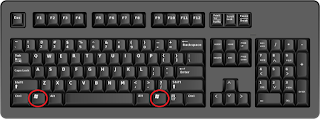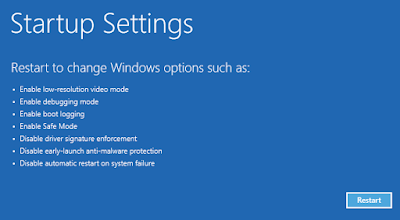844-395-1499 Pop-up
Get Rid Of 844-395-1499 Pop-up from Chrome : Rip Out 844-395-1499 Pop-up
844-395-1499 Pop-up is responsible for causing these errors too! 0x8024C007 WU_E_DRV_NO_PRINTER_CONTENT Information required for the synchronization of applicable printers is missing., 0x8024D00E WU_E_SETUP_REBOOTREQUIRED Windows Update Agent setup package requires a reboot to complete installation., 0x8024002F WU_E_CALL_CANCELLED_BY_POLICY Operation did not complete because the DisableWindowsUpdateAccess policy was set., 0x8024401F WU_E_PT_HTTP_STATUS_SERVER_ERROR Same as HTTP status 500 - an error internal to the server prevented fulfilling the request., 0x000000CB, 0x000000A2, 0x0000006A, 0x00000047, 0xf0814 CBS_E_INVALID_CONFIG_VALUE invalid setting configuration value, 0x0000011B, 0xf0816 CBS_E_DPX_JOB_STATE_SAVED job state for DPX has been saved, 0x8024402B WU_E_PT_HTTP_STATUS_NOT_MAPPED The HTTP request could not be completed and the reason did not correspond to any of the WU_E_PT_HTTP_* error codes., 0x00000013Easy Steps To Uninstall 844-395-1499 Pop-up From Infected OS
844-395-1499 Pop-up is detected as a perilous OS threat which can harm your OS data and files very badly. It intrudes your OS silently and secretly so that you will not identify its presence easily and it can spread itself as much as possible. It can corrupt your data and make it inaccessible. Moreover, it can cause your OS to degrade its performance and applications to respond slowly.
You can infect your OS in many ways like when you open a spam email, visit some unknown and untrusted site, clicking malicious ads or pop-ups and many other ways. But one important method used by 844-395-1499 Pop-up is bundling method in which it gets installed directly with the installation of free downloads. On its arrival into the system, it can almost disturbs the internal settings and functioning of the OS. Hence, if you find such malware into the OS, you need to Uninstall it.
Guide 1 : Delete 844-395-1499 Pop-up From Internet Explorer In OS
Guide 2 : Delete 844-395-1499 Pop-up From Control Panel In OS
Guide 3 : Delete 844-395-1499 Pop-up From Registry Entry In OS
Guide 4 : Delete 844-395-1499 Pop-up From Task Manager In OS
Guide 5 : Guides To Start OS In Safe Mode
Guide To Effectively Uninstall 844-395-1499 Pop-up From Your OS
Guide 1 : Delete 844-395-1499 Pop-up From Internet Explorer In OS
From Internet Explorer -
- Click on Gear icon to open Tools menu in the Internet Explorer window.
- Click on Manage Add-ons option.
- Goto Toolbars and Extensions tab.
- Locate 844-395-1499 Pop-up related add-ons - > Disable button.
- Click More information button and finally click on Uninstall button to completely Uninstall 844-395-1499 Pop-up.

From Google Chrome -
- At first, launch the Google Chrome browser.
- Click on gear icon present in your browser to open Chrome menu.
- Click on Tools option.
- Click on Extension.
- Select all unwanted extensions.
- Click on trash bin icon to Uninstall 844-395-1499 Pop-up.

From Mozilla Firefox -
- Click on the Menu icon present at the top right corner of the browser.
- Select Add-ons option.
- In the Add-ons window, choose the Extensions or Appearance panel.
- Select add-on related to 844-395-1499 Pop-up which you want to Uninstall.
- Click the Remove button.
- Click Restart if it asks.

From Microsoft Edge -
- Click on More (...) icon and click Settings then.

- Now, select A specific page or pages under the Open with option.
- Again, select Custom option.
- Type the URL of the page you want to set as your browser's default homepage.

Guide 2 : Delete 844-395-1499 Pop-up From Control Panel In OS
For Windows XP
- Click on Start button and click Control Panel.

- Select Add or Remove Programs option.

- Find and Uninstall 844-395-1499 Pop-up related programs in the window that appears.

For Windows 7
- Press Window key present on the keyboard.

- Click Control Panel option from the menu.

- A Control Panel window appears from where click on Programs option.

- Select executable file of 844-395-1499 Pop-up.
- Click on Uninstall option.

For Windows 8
- Open run box by pressing Window+R keys together.

- Type control panel and hit Enter key.

- Click on Uninstall a Program.

- Then select all the programs related to 844-395-1499 Pop-up.
- Click Uninstall option.

For Windows 10
- Click on Start button.
- Select Settings option present in the bottom left corner of the screen.

- Select System option under Setting.

- Click on App & Features option.

- Now, Uninstall all the unwanted program.

Guide 3 : Delete 844-395-1499 Pop-up From Registry Entry In OS
- Press 'Windows+R' keys to open Run box.
- Type 'regedit' in the box and click OK button.

- Find out Uninstall all the registry files related to 844-395-1499 Pop-up.
HKEY_LOCAL_MACHINEOSCurrentControlSetServicesWpm
HKEY_CURRENT_USERSoftwareMicrosoftInternet ExplorerMain “Default_Page_URL”
HKEY_LOCAL_Machine\Software\Classes844-395-1499 Pop-up
HKEY_CURRENT_USER\Software\Microsoft\Windows\CurrentVersion\Run “.exe”
HKCU\Software\Microsoft\Windows\CurrentVersion\Internet Settings\random
HKEY_LOCAL_MACHINE\SOFTWARE\Microsoft\Windows\CurrentVersion\run\random
HKEY_CURRENT_USER\Software\Microsoft\Windows\CurrentVersion\Internet Settings “CertificateRevocation” = ’0
Guide 4 : Delete 844-395-1499 Pop-up From Task Manager In OS
- Press Alt + Ctrl + Delete keys altogether to open task manager.

- In the window, click on Process tab.
- Select the unwanted processes running.

- Click on End Process.
Guide 5 : Steps To Start OS In Safe Mode
In windows XP/Vista/7 -
- Click on Start icon.
- Place the mouse on Shutdown button and then click on Restart button.

- Keep pressing F8 button when the OS starts booting-up.
- Select 'Advance boot menu' present on the screen.

- Select 'Safe Mode With Networking' option and press Enter key.

In windows 8/10 -
- Click on Start button and press Shift key at the same time.

- Click on Restart button and click Troubleshoot option.

- Click on 'Advanced option' -> Startup Settings.

- Choose 'Enable Safe Mode' option from the given list and click on Restart.

- Press F5 button to choose 'Safe Mode With Networking' mode.


844-395-1499 Pop-up
Computer worm - Wikipedia, How to remove the PC Repair virus - Microsoft Support Eliminate SECOH-QAD.exe : Best Removal Method Of SECOH-QAD.exe
No comments:
Post a Comment